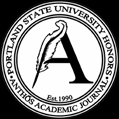Subjects
Psycholinguistics, Perception -- Physiological aspects, Senses and sensation
Abstract
The field of synesthesia has largely been unexplored beyond mere analysis of the condition and only a few papers on the topic of new applications have been published within the last decade. The condition can potentially provide great benefits to the study of the psychology of language along with its role in language use itself. As understanding of this condition continues to grow, one can draw links between it and its effect on language use, thereby enabling a greater understanding of the language process itself. Synesthesia involves the stimulation of one sense along with involuntary activation of another sensory pathway. For those with synesthesia, ninety-two percent of cases are triggered via linguistic inducers, showing deep ties between the pathways used by the condition and those involved with language faculties. This paper will first cover synesthesia along with some of the many permutations the condition takes, then review previous research into the role of synesthesia in psycholinguistics including the subject of improved recall. After providing background, this paper will provide a framework for carrying out artificial simulation of the condition to improve participant’s word recognition. Finally, it will attempt to answer the question of what could be done with the results gleaned. The linking of sensory activation, or “cross talk” as it is commonly known, points to new understandings of how humans process information, especially language. Research can also be applied to further investigation of how those without the condition could apply similar techniques to facilitate visual word recognition.
The role of synesthesia has not been adequately researched in light of its relation to lexical decision tasks. It has been previously shown how cognitive research can be effectively 3 informed by synesthesia research, yet there are virtually no extant studies on the application of synesthesia along with the possibility of artificial simulation. This study attempts to address this issue by simulating synesthesia through a period of training; subsequently, the results of the study will provide a baseline for the work involved in future application of synesthesia to other areas.
DOI
10.15760/anthos.2012.1
Creative Commons License

This work is licensed under a Creative Commons Attribution-NonCommercial-Share Alike 4.0 International License.
Persistent Identifier
http://archives.pdx.edu/ds/psu/12563
Recommended Citation
Charles, Lucas
(2012)
"Research Proposal for Study: Can Artifical Emulation of Synesthesia Aid Visual Word Recognition?,"
Anthós:
Vol. 4:
Iss.
1, Article 1.
https://doi.org/10.15760/anthos.2012.1
